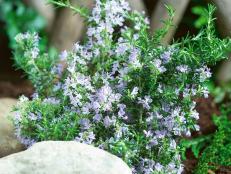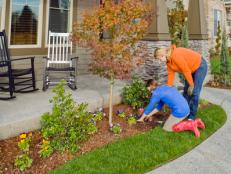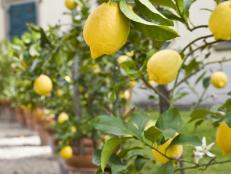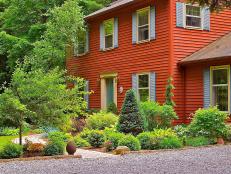Home Orchard Layout Tips

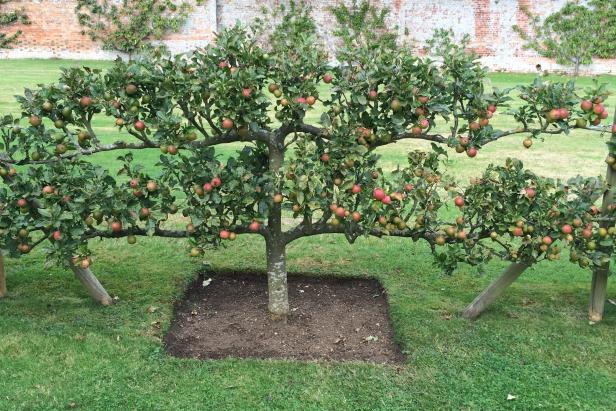
Photo by Felder Rushing
Home-grown fruit can be a rewarding part-time outdoor hobby with healthful benefits. Many fruit plants serve double duty landscape plants as well.
However, like a strawberry patch or asparagus bed, an assortment of long-lived fruit plants requires planning. Even new compact, pest resistant varieties are a big, long-term investment in garden space, and need annual fertilizing and a little expertise in pruning, and sometimes pest control, to remain compact and fruitful.
Crucial First Step: Fruit Type and Variety
Before planting a home orchard, understand that many fruits may not produce well or resist pests in your area’s climate.
As examples, cherries require long, cold winters, and won’t fruit at all in mild climates; figs will freeze if left outside in very cold areas. And specific varieties of each fruit type require a narrow range of “chilling hours” – below 45 degrees F but above freezing – before they will flower and make fruit; too few hours will keep some varieties from flowering, while too many can result in early flowering before the last hard freeze.
To find the average chilling hours for your area, and a very dependable list of what kinds and varieties of fruit have proven to do well in your part of the state, contact the county Extension Service office. There will also be recommendations for those which are resistant to common pests or how to prevent or control them. Also find out if your preferred fruit will produce on its own or requires a different variety of the same fruit nearby for pollination.
Finally, depending on whether you prefer fresh eating or preserving for later use, select those which either mature over several weeks to avoid having a lot to eat at one time, or which ripen all at once to make harvesting and preserving more efficient.
Site Selection
Very few fruit plants will produce without at least eight hours of direct sunshine; choose a location that is in full sun most of the day. Air circulation is very important for reducing fruit diseases, so make sure the area is open and has enough room to space plants out. And because cold air sinks, avoid low valleys or bottoms of hills.
Soil must be well-drained, both for surface water runoff and internally. If your soil is heavy clay or stays wet, create low, wide mounds or raised beds. Water is essential during fruit formation, so be prepared to irrigate or expect losses.
Keep grass and weeds from beneath plants with regular shallow cultivation without damaging roots, or a thick ring of mulch not piled up on trunks.
Fruits which require spraying for insects and diseases should be planted away from vegetable gardens and pet areas. And most fruit plants are animal magnets – a fence around the area may be absolutely necessary.
Training for Space
Though some plants can be sheared as hedges, espaliered against sunny walls, kept on trellises or in large containers, fruit plants need space for air circulation and maintenance. Plant tall trees and shrubs north of smaller ones, and, when practical, run rows and vines north and south to get maximum sun.
Apple, pear, cherry, mulberry, pawpaw, and nut trees typically get very large even with thinning and pruning. Peach, plum, crabapple, apricot, Japanese persimmon, loquat, and citrus trees, plus fig, pomegranate, elderberry, and blueberry shrubs, can be kept smaller with pruning. Grape, raspberry, hops, and passion fruit vines require trellises at least four or five feet tall and ten to twenty feet long. Blackberries tend to make dense hedges and may need thinning and edging.
Many trees are grafted onto dwarfing or semi-dwarfing rootstocks which keep them smaller in size but with regular size fruit. Still, annual pruning is one of the most important chores for keeping plants short, compact, and open for easier harvesting and less breakage under heavy fruit loads; neglect this and you can quickly lose control.
There are some very innovative ways to train and keep fruit plants growing in tighter spaces, as well as substituting them for other plants as regular landscape features, making it possible for nearly anyone to enjoy attractive, interesting, productive fruit plants in their gardens.






